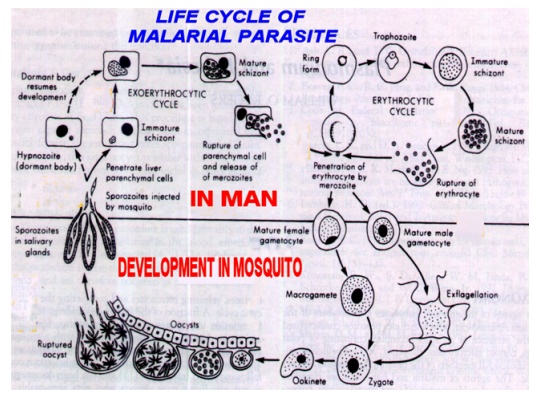Chapter: Microbiology
Malaria

MALARIA
Malaria
Malaria is a mosquito borne parasitic disease characterized by episodes of fever, chills, and rigors which occur typically and periodi-cally every third day.
Etiological agents
Four species of Plasmodium cause Malaria in man. They are Pum,.vivax,P P.falcipar .malariae, P.ovale.
Life cycle of Malarial parasite (Fig: 23.1)

1. Following the bite of an infected mosquito the sporozoites are introduced into the body
2. The parasites first invade the cells of the liver
3. They multiply by the process of schizogony
4. After 6-12 days merozoites are released into the blood
5. The parasites invade the RBC
6. Inside the RBC they continue to multiply and release merozoites.
7. Some parasites transform into macro and micro gametocytes which are taken by the mosquitoes.
8. Inside the mosquitoes further multiplication leads to the production of sporozoites.
Morphological characteristics of developmental stages of malarial parasites

Clinical features
The clinical features of malaria are due to the blood stage para-sites. There is fever with rigor, head ache, myalgia, arthralgia, nausea and abdominal pain seen in malaria. Due to rupture of RBC there is anemia. Mild enlargement of spleen is seen.
Laboratory diagnosis of malaria
Presence of malarial parasites in the blood confirms the diagno-sis of malaria. A thickly spread blood film is useful for spotting the parasites. Thinly spread films help in the accurate identification of the species. Blood films are stained by either Giemsa or Leishman stains. Concentration technique like QBC are also available for the diagnosis.
Treatment
Antimalarial drug are used primarily to eliminate the asexual and blood parasites. Treatment also must be given to eliminate liver stage parasites (Hypnozoites) that could give rise to relapse infection
The drug of choice is chloroquine. To prevent relapse primaquine is used.
Related Topics